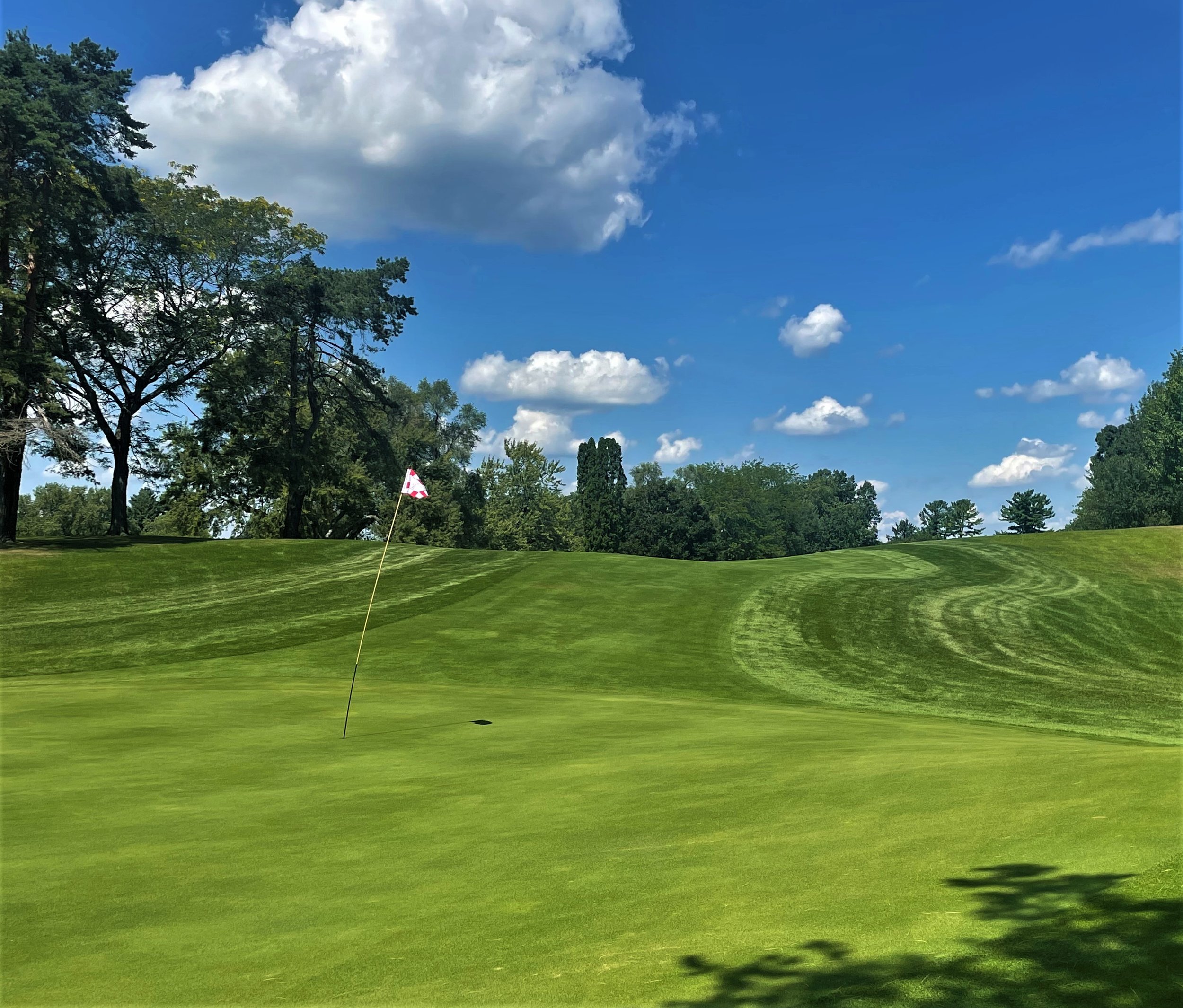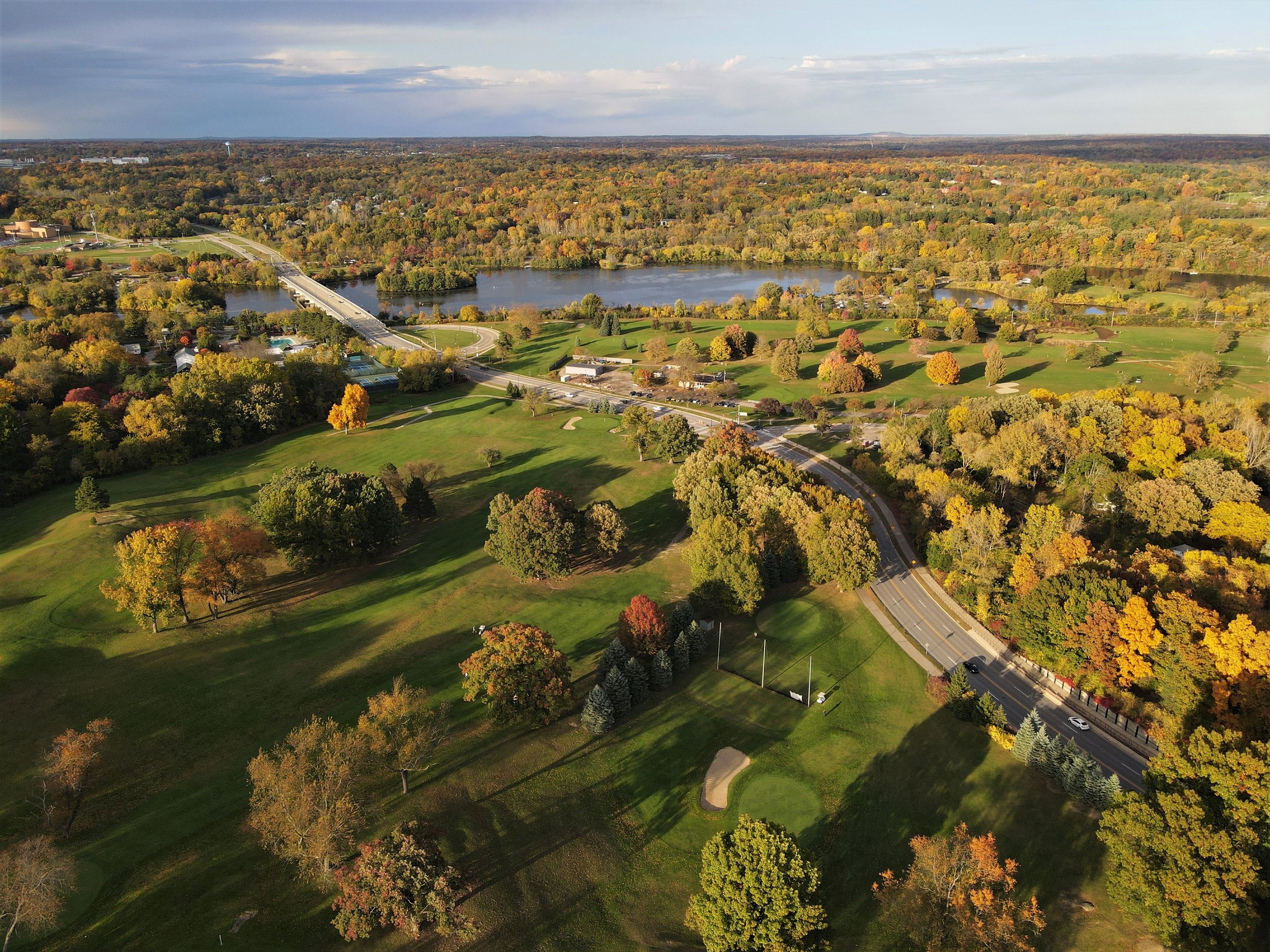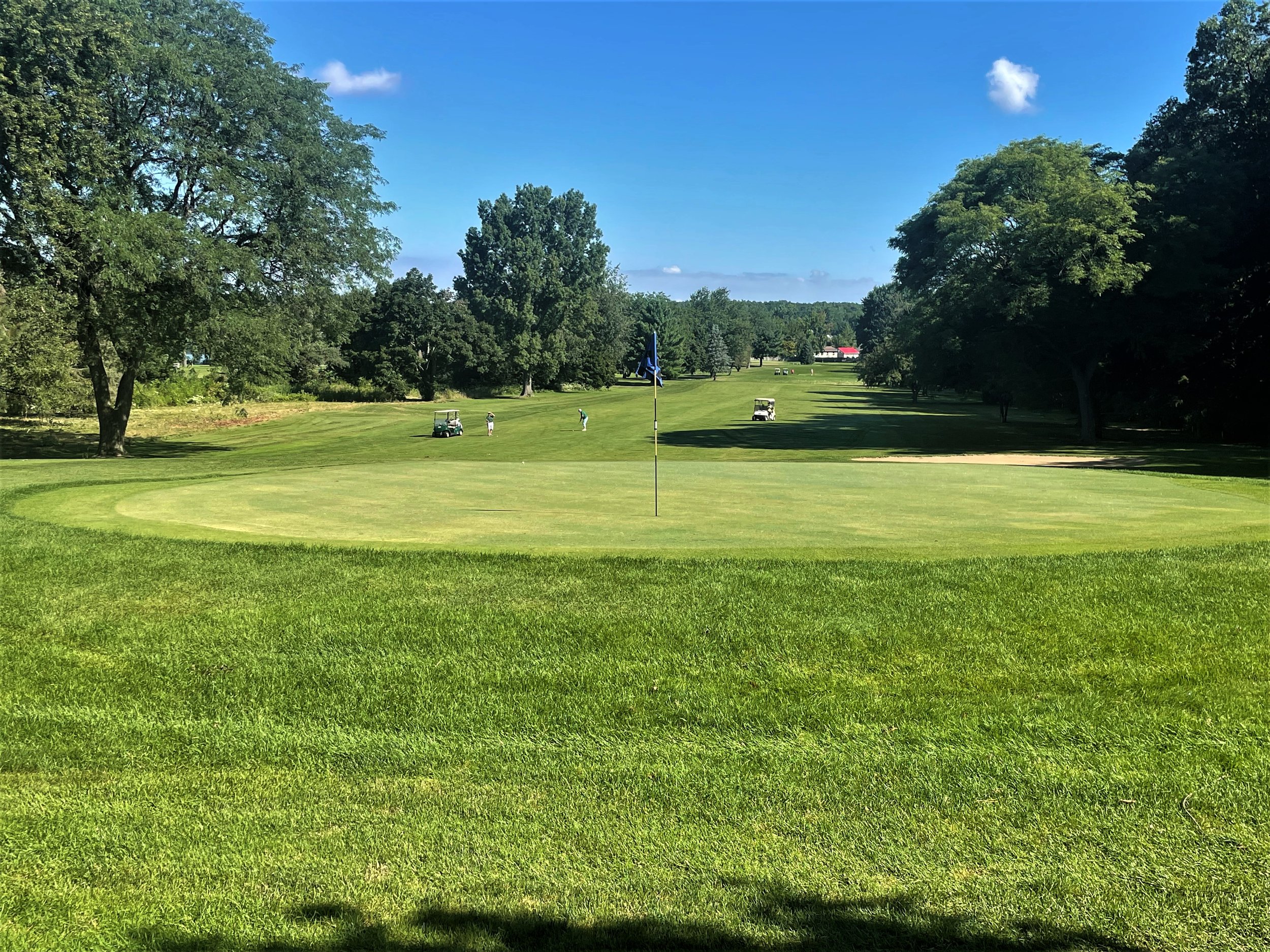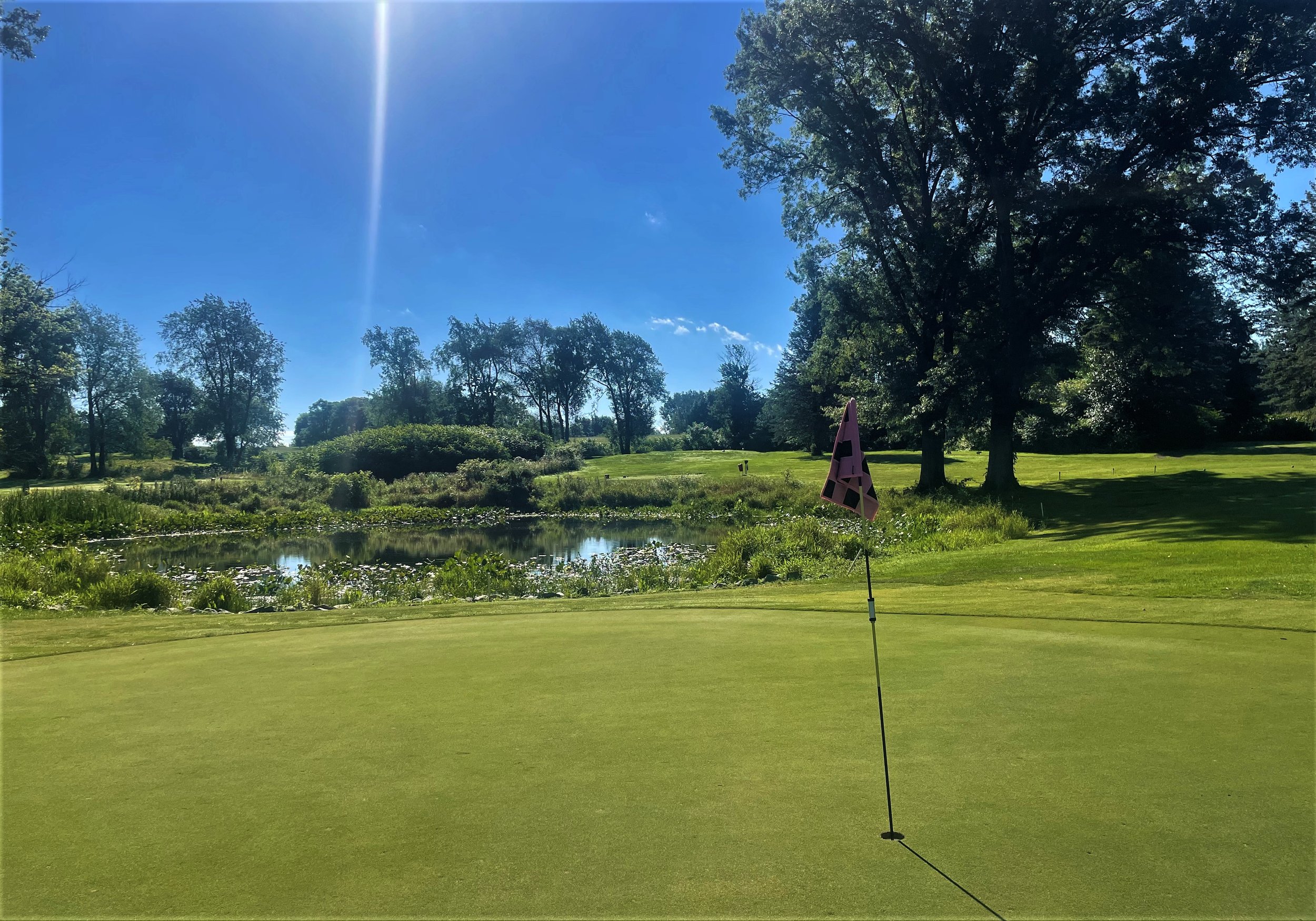100 Years: Centennial Celebrations at Duck Lake, Marshall and Huron Hills
By Tom Lang
Thomas Bendelow, the long-heralded golf course architect who grew up in Scotland before moving to America in 1885, was a vey busy man in Michigan during the early 1900s. In fact, in 1922, four Michigan courses he designed opened. At varying times this year three celebrated their centennial anniversaries; all but Green Ridge in Grand Rapids, which previously shut down in 1988.
Bendelow designed more than 50 courses in Michigan alone, plus several hundred nationwide from NY City to Florida to California. In most cases in Michigan, they were 9-hole layouts that were later expanded to 18 holes, often in mid-century and by a different designer.
The three mentioned still in operation today and celebrating 100 years are basically located along what’s now the I-94 freeway corridor: Marshall CC, south of Marshall; Duck Lake CC, north of Albion; and Huron Hills in Ann Arbor, just north of I-94 and along the Huron River.
DUCK LAKE CC:
Writing this story might backfire. I lived in mid-Michigan for more than 25 years and never heard of the quiet, sleepy little recreational lake community of Duck Lake – and I get the feeling that members at this wonderful golf course don’t want others to know about it. It’s located straight south of Charlotte, about halfway between Eaton Rapids and Albion. It’s beautiful blue waters and shoreline is filled with multi-generational summer cabins, that in some cases have grown into $1.5M homes and is what some call a country oasis. Quite. Peaceful. Beautiful. Relaxing.
Generally, I don’t publish much material on private golf courses; I save most content for public-access facilities. But in the case of Duck Lake, I see very little reason many golfers in the region wouldn’t choose to join the club with its very affordable member rates. Those who do will find a wonderful Bendelow layout, but without the crowds.
He designed the front nine and was given unusually hilly land to work with, especially considering the property is very close to the lake’s edge and in a region of Michigan that’s mostly flat farm land. The back nine was developed in 1969 by Arthur Young of Kalamazoo. While the back nine is flat, by no means does it disappoint. The layout is just as green and lush as the hilly tree-lined front nine, with two carries over water and a very unique 90-dgree right turn dogleg hole. The back nine plays longer than the front (2850 yards) at 3150 from the tips.
Hole No. 1 starts at the highest point on the property, with a fairway traveling down into a deep valley and back upward to a perched green. The same path describes the parallel 9th hole coming back. My favorite on the front is the par 5 fourth hole, which travels up and down over more than a half dozen rolling peaks and valleys, before reaching a green complex slightly to the right and well below the fairway surface. It is one of two greens on the front that require an extra-extended flagpole to barely see the flag from the fairway approach.
No. 6 is a close second for favorite hole. From the tee it goes downhill, then up, then down, then up, and turns left to the green. All bunkers on the course feel well placed, for both aesthetics and causing trouble for bad shots.
The newer general manager at Duck Lake CC is Alex Coss, who ran Eagle Eye and Hawk Hollow for almost two decades. He has helped bring back much of the club’s glory from past economic and population challenges.
MARSHALL CC:
Jacob Martinson, age 20, is a very young club pro still working on his degree at Grand Valley State, but as a young man who grew up in Marshall and started at the club six years ago as a caddie, it’s an example not that far from what small-town clubs do to support each other.
The family connection runs deep for Martinson, who said in the 1920s his great-great-grandfather was a caddy at Marshall CC, eventually becoming club president in the 1960s.
Members also take the extra time and effort to care for the course. This past spring, more than three dozen members came out to work on all the bunkers, trimming them and refilling sand as needed – all for a spruce up for the 100th year.
“It really shows that they care about the place,” he said. “It’s a place not just for golf but for building relationships.”
Part of that was preparation to host the Atlas Cup, a long-standing tradition the Golf Association of Michigan (GAM) has of a Ryder Cup-style competition between Michigan’s best women amateurs from both private clubs and public courses.
Bendelow designed the front nine at Marshall. Then in 1972 for the 50th anniversary, William Newcomb made some adjustments and designed the back nine. The property measures just over 6,500 yards from the championship tees with multiple tee options to fit all skill levels. Views of Lyon Lake and Fish Lake add to the experience of tree-lined fairways and small greens typical of the 1920s golf designs.
Michigan Golf Hall of Fame member John Morse, a former PGA Tour player, U-M standout golfer and winner of the PGA Tour’s 1995 Hawaiian Open, is also a former PGA professional at Marshall CC. His association with the club is well-documented in the pro shop – and according to Martinson he still lives on Lyon Lake.
The public is allowed to play the course Friday through Sunday.
HURON HILLS in Ann Arbor:
(This section adjusted from a course review I wrote for the Detroit Free Press in 2016)
Length: A short course that ranges from back tees of 5,071 yards, to forward at 4,446.
History lesson: The original design was laid out by golf course pioneer Thomas Bendelow and has stood the test of time with its rolling hills, elevated views of the Huron River, wide open first seven holes and excellent upkeep by the city of Ann Arbor.
Most memorable: Hole No. 8 is the most dramatic compared to the other 17 in that it funnels through a small valley. A limited landing area off the tee on the par 4 has a hard left-to-right slope that pushes balls toward the trees out of bounds right. If you keep the ball in play in the middle, the same slope that runs the entire left side hides the view of the left half of the green, but is complemented and balanced by sloping on the right side and the back around the green to form a bowl approach shot.
Picture this: No. 12 is arguably the most picturesque hole with its sharp downhill plunge off the tee and gentle dogleg right turn. Unique mounding in front of the green and a bunker right guards the putting surface.
Overview: Great golf course for all age levels and skill sets – especially the first seven holes – which are wide open, with a creek to navigate, situated on the flat land near the Huron River. They are set up with “wee tees” for the less experienced golfers at a total of 1,231 yards. Then cross the street for the final 11 holes and everything changes. Rolling hills, drop offs, elevated greens and tree-lined fairways challenge even the best golfers, who are treated to some very nice views of the river valley.





